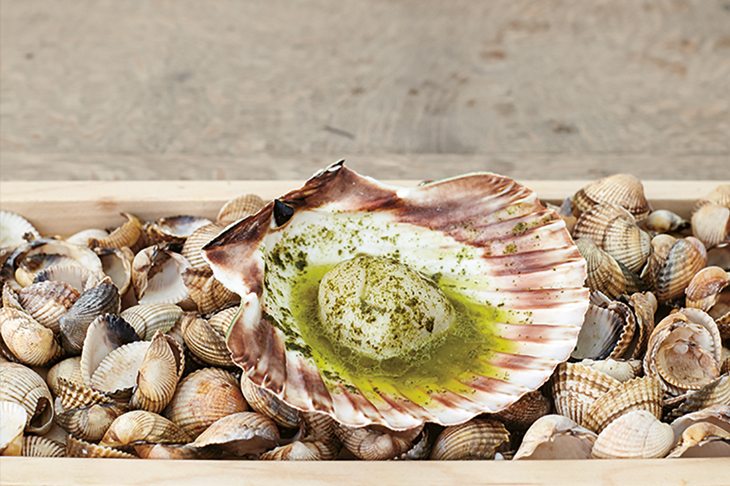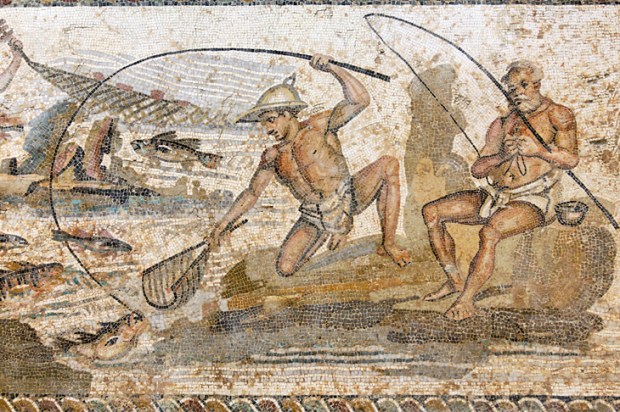The terroir of the Kentish coast is faultlessly represented in The Sportsman (Phaidon, £29.95), a book of recipes from an acclaimed pub restaurant in the village of Seasalter, close to Whitstable. On the bill of fare (it’s that English) you will find slip soles and thornback ray, salt marsh lamb and oysters, seaweeds of all sorts, wild berries, venison and much else from this landscape with its watery edge. The food is seasoned with home-panned sea salt and the kitchen churns its own butter.
The Sportsman’s chef-proprietor,Stephen Harris, writes that terroir is a troublesome word that has come to mean too many things, especially with wine. The French have perhaps deliberately mystified it, he says. With food, terroir remains the best term to define how variations in landscape and climate in a place give a region a certain identity. This is aired strikingly, with Toby Glanville’s photographs of the estuary and marshes, weald and orchards — a soothing greyness, an atmosphere of English Nordic to get you into the mood and cook Harris’s recipes, mostly easy to make: Try scallops in seaweed butter, crispy lamb breast with mint sauce or grilled plums with plum- stone ice cream.
Understanding local distinctiveness may be a code that British cooks are reviving, but it goes against our natural piratical culture only to eat the view. There have been curry houses in Britain since the turn of the 20th century, reveals Christoph Ribbat’s In the Restaurant: Society in Four Courses (Pushkin Press, £16.99). This is the perfect book to buy anyone who loves to eat out. More than a history book, it is an insight into the underbelly of catered food, the lives of kitchen and waiting staff, of past elf ’n’safety-free kitchens more like slave ships, but also reforming, revolutionary restaurateurs in the world’s great cities.
British waiters working in London’s trattorias once spoke to customers in cod Italian accents, silver-serving spaghetti Bolognese. Now it’s a case of which Italian region is not faithfully represented by a restaurant. Chefs and waiting staff are well-travelled, the customers want to cook the food at home and books on true Italian food provide the recipes. Food writer Anna del Conte is one of the best at cucina regionale, the doyenne even. Recipes in the new edition of her 1995 book, Classic Food of Northern Italy (Pavilion, £25), are typical of her ability to take original, historic dishes and make them feel fresh and modern.
This is cooking from above Italy’s butter line, so plenty of grains — risotto rice, faro, buckwheat and emmer — along with cheeses, seafood, chestnuts, mushrooms and velvety coffee-flavoured puddings. Among its new-ancient dishes I am eating polenta taragna, buckwheat and cornmeal mashed with butter and cheese, Astrakhan for the stomach.
For enchantingly fragrant, earthy food from below Italy’s tomato line there’s Rachel Roddy’s Two Kitchens: Family Recipes From Sicily & Rome (Headline, £25). Roddy has lived in both places, discovered a great variety of dishes and writes about them with joy and know-how. I’d like large helpings of her chicken with citrus and olives after a starter of pasta with cauliflower, anchovies, saffron, pinenuts and raisins. The big Italian book of the year, incidentally, should have been River Café 30 (Ebury, £28). It’s more from Ruth Rogers and her team, in high-gloss packaging, but the recipes are, in contrast to the above books, overfamiliar and occasionally profligate. Not even a Lottery win would bring me to braise two kilograms of fillet of beef. Silverside, surely.
Olia Hercules’s Kaukasis (Mitchell Beazley, £25) is a wonderful mix of regional history, family stories and astonishingly colourful recipes from Georgia, Azerbaijan and Armenia. Recipes include quince halves stuffed with aromatic lamb; fried courgettes with a lovely yoghurt sauce called matsoni; and dyushbara, a dumpling broth not so quick to make, but soulfully good.
One of the best dishes I ate this year was a bone marrow curry in the Sri Lankan Soho restaurant Hoppers. Hoppers are Sri Lankan staples: dome-shaped rice flour and coconut milk pancakes, crunchy on one side. In their ‘well’ you might find a fried egg, sambal (hot chutney). toasted peanuts, fresh chilli or a curry. Hoppers’s (the restaurant’s) originator Emily Dobbs’s book Weligama (Seven Dials, £25) is full of characterful recipes: cucumber curry, gotu kola salad (fresh herbs, grated coconut, onion and anchovies); fresh pickles aplenty and a sticky perfumed celebration sponge known as Love Cake. This is the book of the year for spice fans. No bone marrow curry in it, sadly, so it’s back to Soho.
No bone marrow either in Michel Roux Jr.’s tribute to offal, Les Abats: Recipes Celebrating the Whole Beast (Seven Dials, £25) but pretty much everything extreme belonging to an animal is. Cooks need to be in safe hands with offal, never a problem with a Roux family member, so dive into the uncharted and try chicken liver gratin, the crispy feet of the same bird, hake throats à pil pil or a sweetbread and black pudding tart. A classic, bravely without images; but Roux’s enthusiasm for his subject is enough.
Two good vegetable cookbooks are on my list: Ed Smith’s useful On the Side (Bloomsbury, £20) respectfully addressing what to eat by a main course, from archetypal boulangère potatoes to original brassica dishes including a strange but mustily good yeasted cauliflower purée. California chef Jeremy Fox’s On Vegetables (Phaidon, £29.95) takes edible plants to sophisticated altitudes, combining the unlikely into pretty, appetising plates. There’s grilled artichoke with celery leaves and lemon, baked beetroots with hazelnuts and nectarine purée and a subtle salad of roasted spring onions and honey.
Healthy cookbooks have calmed down a bit since clean eating got the drubbing it deserved. I buy the concept of food as medicine and in middle age I need it. Just don’t justify it without science proper, is all I ask food writers. Alexandra Dudley’s gorgeous first book, Land & Sea, Secrets to Simple, Sustainable Sensational Food (Orion, £25), does health without the flam, and come January I’ll be eating her roasted squash with lemon avocado cream by the crate.
The terroir at One Gun Ranch, Malibu, was once home to the Chumash, a Native American tribe of hunter-gatherers and fishermen who understood sustainable food culture, wasted nothing and ate according to the seasons and the natural environment. Similar types probably once settled in Whitstable and other coastal farmland, I suppose. Twenty acres of the hilly land is now being farmed biodynamically by Alice Bamford and Ann Eysenring, and their book One Gun Ranch (Regan Arts, £33.99) addresses the need to work land to the full without wrecking the environment.
Stylish and nutritious recipes make up half the book, but as a new smallholder I became completely immersed in thoughts about planting and cropping using the lunar calendar. I am probably too disorganised, but Brexit is concentrating my mind. I like to think that in Britain, with the prospect of food prices rising and low food security (we import more than we produce), every small space may need to be utilised and we will look after the soil, loving our own terroir once more (and stop growing biofuel, please). The Sportsman has a recipe for making butter. Now that it is at least £1.50 a pack I shall, inspired, get churning.
Got something to add? Join the discussion and comment below.
Get 10 issues for just $10
Subscribe to The Spectator Australia today for the next 10 magazine issues, plus full online access, for just $10.
You might disagree with half of it, but you’ll enjoy reading all of it. Try your first month for free, then just $2 a week for the remainder of your first year.














Comments
Don't miss out
Join the conversation with other Spectator Australia readers. Subscribe to leave a comment.
SUBSCRIBEAlready a subscriber? Log in